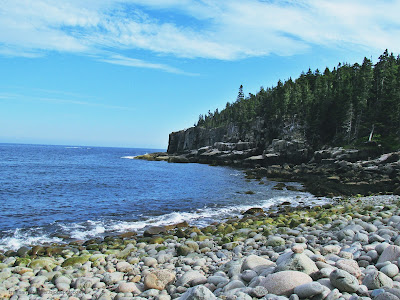SOAR Program
Yesterday, October 29th, 2016, I had the pleasure of watching a presentation by SOAR Illinois at Starved Rock. SOAR stands for Save Our American Raptors. Needless to say, I was in for a treat-- they came with six rescued birds to show off. Using my phone, I was taking notes on the presentation. As we all know, sometimes technology can backfire on us... I lost my notes! Regardless, I remember quite a bit about these intriguing birds.
The Owls
 |
| Great Horned Owl |
The first owl they showed us was none other than a Great Horned Owl. She was so lovely looking-- I was glad to see her up close! I learned that these cool owls eat a lot of skunks, as they don't really have a sense of smell. Also, one of their ears are slightly higher on the head than the other, which improves their ability to hear and pinpoint prey.
Next we saw a beautiful Barred Owl. I don't remember too much about him, other that his name was Patrick. Barred Owls' eyes are very dark and almost look like dark hollow holes. They're a spooky, but make the owl even cooler.
They had a Short Eared Owl named Stitch. He was rescued after being found injured. They tried to sew up his wounds, but every time he ripped out his stitches! That's how he got his name. These owls live in grasslands and nest on the ground, unlike the other kinds of owls that we saw.
 |
| Athena-Screech Owl |
 |
| Golem-Screech Owl |
The last owls that SOAR presented were two screech owls. One was a boy named Golem and the other was a female named Athena. They were so cute and little, despite being full grown. Golem weighed only 2.5 ounces, and Athena weighed 4. There is a significant color and body appearance difference between the two birds. Athena is red and round, whereas Golem is grey and and more tall. I learned that these owls eat a lot of moths. Sometimes they are mistaken for bats when it is dark. Athena is missing an eye. When she was rescued, her eye was removed because it was damaged from her injuries. The screech owls were my favorites out of the birds that SOAR brought.
...And a Turkey Vulture
The final bird that we saw was a Turkey Vulture. I see these birds fairly often, but never up close. Apparently they smell very bad. I learned that they have a bald head so that when they stick their head into all the dead, rotting stuff that they eat, the nasty germs and bacteria won't get caught in their feathers. It is interesting that the bird has one nostril that is hollow in between. You can actually see straight through his nose!Protect the Birds
 |
| Patrick-Barred Owl |
 |
| Stitch-Short Eared Owl |
Anyway, the presentation was extremely informative and interesting. I recommend seeing a presentation by SOAR if you ever have the opportunity. You can visit the SOAR website here to learn more about them and support their cause.






Comments
Post a Comment